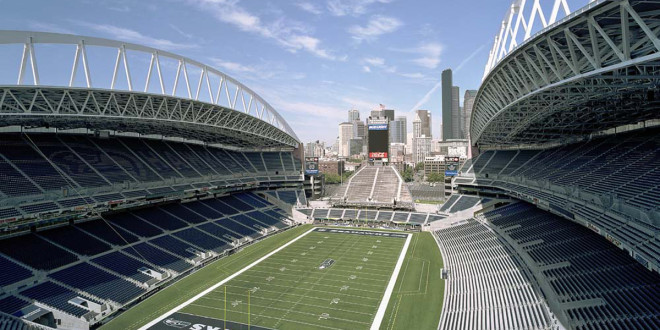
As time goes by, non-renewable energy sources come to the very brink of their purposefulness, and climate changes impossible to ignore. The questions of sustainability and green economy become some of the most frequently discussed topics. What’s even more important, these burning issues are now leaving the closed economic and industrial circles and now breach every aspect of human activity. Is there any better example of this than sports? For example, back in 2019, the number of gyms in the USA reached the number of 41,370. And gyms are only a fraction of the sports facilities we have stateside.
Obviously, these energy requirements of such facilities need to be addressed and optimized. Let’s see how.
The changes start in the planning phase
The issue of sustainability is not exclusively related to the energy consumption in the facility in question. The impact on the environment is produced even during the production of the building components, as well as at the site of construction. If the building materials are not insulated and produced in accordance with the modern construction standards, the facility will lose energy on a continuous basis. The solution to this problem comes in the form of sustainable modular facilities that are affordable to produce, sustainable, and easy to assemble.

Implementing latest energy efficient measures
The technological trends in the renewable energy field moved its fruits closer to the SMB sector and average consumer. To be honest, harnessing the resources like wind and solar energy still asks for rather high upfront costs, which may pose an obstacle for small gym and sports hall owners. But, on the other hand, we have to point out that local and national governments all around the world have been stepping up the game when it comes to rebates and other financial incentives, so the prospects of green energy still come out as viable in the long term.
Using the energy-efficient lighting
Indoors sports facilities use a tremendous amount of energy for the purposes of lighting to keep the space well-lit during work hours. The costs and consumption exponentially grow when we start talking about the larger venues suitable for soccer, futsal, handball, etc. Fortunately enough, these expenses can be drastically cut with the use of sustainable LED sports lighting that doesn’t even require a significant up-front investment. At the same time, the sports venue owners get a solution that is more enjoyable and easy-on-the-eyes than the traditional options.

Upgrading the heating and cooling systems
HVAC systems are yet another energy-taxing piece of infrastructure the modern sports facilities simply operate without. Things became only more strenuous with the outbreak of COVID-19. In these new circumstances, HVAC equipment often requires various upgrades and tweaks to be approved by the local legislative bodies. However, these unfortunate circumstances also give venue owners the opportunity to overhaul their HVAC systems and upgrade them with more efficient peripherals without extensive additional expenses.
Using the equipment to generate energy
As we all know, the point of a good workout is to spend energy. But, can this spent energy somehow be harnessed and used to power the workout equipment elsewhere? Actually, yes. One example of this practice can be found in the Eco Gym – a green fitness center located in Rochester, New York. Namely, all the cardio machines in this gym are equipped to transform the kinetic energy of your moves into usable energy used by other machines – 160 Watts of power per average workout, to be precise. This innovative thinking can be easily emulated all around the world as well.

The rise of integrated management systems
Last but not least, we have to mention the ever-growing usage of the cutting-edge management systems that are keeping all the aforementioned systems in check while optimizing the overall consumption – all through one integrated interface. One of the main perks of such integrated platforms is that they are not only the easiest way to handle various systems at once, but they also make these separate systems work together, counterbalancing other’s weaknesses and downtimes. Running complex facilities like recreation centers without them would be near impossible.
We hope these few tips gave you some general idea about the ways one sports facility can be upgraded to consume less power and become more efficient overall. The fight for a green economy and sustainable society is fought on every level. The sports facilities, gyms, and recreation centers that are counted in tens if not hundreds of thousands make a huge part of this struggle. Now, you know what has to be done to join the cause.


